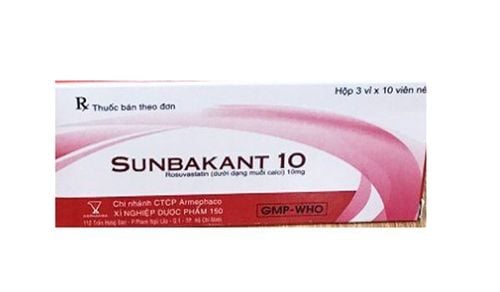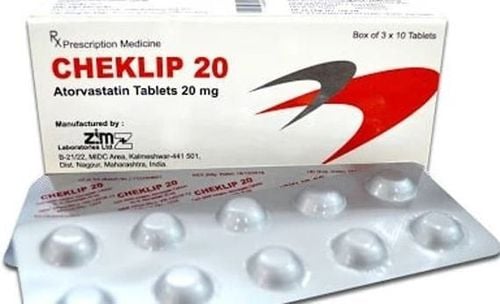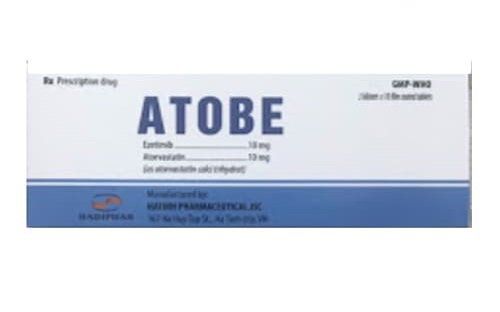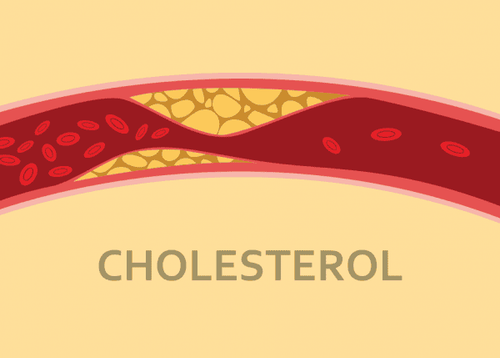This is an automatically translated article.
This article is professionally consulted with - Master, Doctor Pham Van Hung - Interventional Cardiologist - Department of Medical Examination & Internal Medicine - Vinmec Da Nang International General Hospital.Although cholesterol is an indispensable component, when this content is high, it can be harmful to the body. Therefore, measuring cholesterol levels will show whether this level is high or low in the blood for appropriate treatment.
1. What is cholesterol?
Cholesterol is a component of fats in the blood, and plays an important role in most body functions, helping cells keep their job. Cholesterol is an indispensable element in the functioning of nerve cells, is a component in the production of certain hormones, helps the body function normally and healthy.We often associate cholesterol with fatty foods, but most of this compound is made by the body. The liver produces 75% of the cholesterol that circulates in our blood, the remaining 25% comes from food.
If it is in normal concentrations, it helps the body work better, but if there is an increase in cholesterol, it will cause many diseases related to the cardiovascular system.
The amount of lipid in the blood is related to the risk of cardiovascular disease, so people need to control it. Here are some forms of cholesterol that can affect the body:
Bad cholesterol or LDL-Cho: Most of the cholesterol in the blood is carried by proteins called low-density lipoproteins or LDL. This is called bad cholesterol because it combines with other substances to increase the risk of clogged arteries. A diet high in saturated and trans fats tends to raise LDL cholesterol levels. For everyone, an LDL-donor level below 100 mg/dl (2.6 mmol/l) is considered optimal and when ≥ 190 mg/dL (4.9 mmol/L) is dangerous and requires use medicine. "Good" or HDL-Cho cholesterol: One-third of cholesterol in the blood is combined with high-density lipoproteins, or HDLs. This is called good cholesterol because it helps to remove bad cholesterol from the arteries, transport it to the liver and prevent it from accumulating inside the arteries. The higher the HDL cholesterol, the better. People with too little HDL-don are more likely to develop cardiovascular disease. Eating healthy fats and exercising also help increase HDL levels. Total cholesterol: Total cholesterol measures the combination of LDL, HDL, and VLDL (very low density lipoproteins) in your blood. VLDL is a precursor to LDL, the bad cholesterol. Total cholesterol if less than 200 mg/dL (5.1 mmol/L) is considered ideal, if it is greater than or equal to 240 mg/dL (6.2 mmol/L) the conclusion is elevated cholesterol in the blood and the risk of atherosclerosis is 2 times higher than that of the general population. Triglycerides: This is another component of blood lipids besides cholesterol. It also contributes to an increased risk of cardiovascular disease. The body converts excess calories and sugar into triglycerides, which are stored in fat cells throughout the body. People who are overweight, inactive, smoke or drink heavily tend to have high triglycerides. A triglyceride score of 150mg/dl or higher puts you at risk for metabolic syndrome, which is linked to cardiovascular disease and diabetes. Thus, the level of cholesterol in the blood helps identify their risk of disease. Good blood fat control is very important to limit the risk of cardiovascular disease and blood pressure.
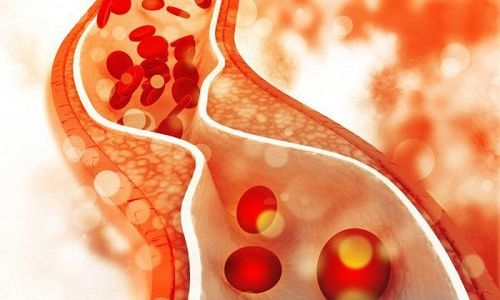
2. Symptoms of high cholesterol
High cholesterol levels do not cause any symptoms. But it does pose a potential disease risk in the body. Over time, high cholesterol leads to a buildup of plaque in the arteries (commonly known as atherosclerosis). This condition causes narrowing, which limits blood flow in the blood vessels and can be a cause of cardiovascular disease. Although not detected through normal symptoms, high cholesterol levels are detected simply through a blood test.Blood cholesterol testing should be done in people over 20 years old every 4-6 years. This is simply a blood test, commonly known as a fasting fat test. The test measures the different forms of cholesterol circulating in your blood after you haven't eaten for 9 to 12 hours. The results show you the levels of total cholesterol, "bad" cholesterol, "good" cholesterol, and triglycerides in your blood.
From fasting blood tests to help detect and have appropriate treatment indications for each case of high or low cholesterol.
3. How to lower cholesterol
3.1. Change your eating habits and lifestyle Eat more fiber Make a drastic change to your diet to fight high cholesterol. If you've ever wondered why certain grains are heart-healthy, it's because of their fiber content. Soluble fiber found in many foods helps lower LDL-cholesterol.Good sources of soluble fiber include whole grain breads and cereals, oatmeal, fruit, dried fruit, vegetables, and legumes.
Understand your daily fat needs No more than 35% of your daily calories come from fat. Saturated fats (from animal products) raise good LDL cholesterol. Trans fats raise bad cholesterol.
2 This bad fat is found in many baked or fried foods, margarine, and cookies. Unsaturated fats can lower LDL when combined with other healthy dietary changes. They're found in olive oil and peanuts...
The Best Protein You can lower your LDL cholesterol by switching to soy protein (such as tofu) for some of your meals.
Some fish are also good choices, for example salmon is rich in omega-3 fatty acids, which can improve cholesterol levels. The American Heart Association recommends eating fish at least twice a week.
Low-carb (low-carb) Diet There is growing evidence that a low-carb diet may be better than a low-fat diet for improving cholesterol levels.
In a 2-year study funded by the US National Institutes of Health, people on a low-carb plan had significantly higher levels of HDL (good cholesterol) than those on a low-fat plan.
Quit smoking Quitting smoking makes your good cholesterol levels likely to improve by up to 10%. You may have more success with a combination of several smoking cessation measures. Consult your doctor for the best options.
Exercise If you are healthy but not active type, start with an aerobic exercise program to improve good cholesterol. Basic exercise also lowers bad cholesterol.
Choose an activity that helps you improve your heart rate such as jogging, swimming or brisk walking. You need to be active for at least 30 minutes a day.
3.2. Treatment of hypercholesterolemia Using medication to treat hypercholesterolemia If your family has a history of high cholesterol but diet and exercise do not help improve the condition, the use of medication may be indicated.
Statins is always the first choice. It can block the liver's production of cholesterol. Other options include cholesterol and bile acid absorption inhibitors. Your doctor will advise you about taking these drugs together.
Supplements (functional foods) Some supplements can help improve cholesterol levels. These include plant sterols, barley, oats, fiber, and green tea.
Herbs Some studies show that garlic can remove a few percent of total cholesterol (total cholesterol). But garlic pills can have side effects and interact with other medications. Other herbs that can lower cholesterol include artichoke leaf extract, clover, lemon basil, lotus leaf...
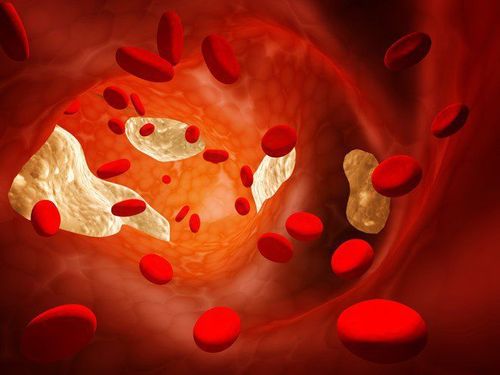
Please dial HOTLINE for more information or register for an appointment HERE. Download MyVinmec app to make appointments faster and to manage your bookings easily.
Reference source: webmd.com




